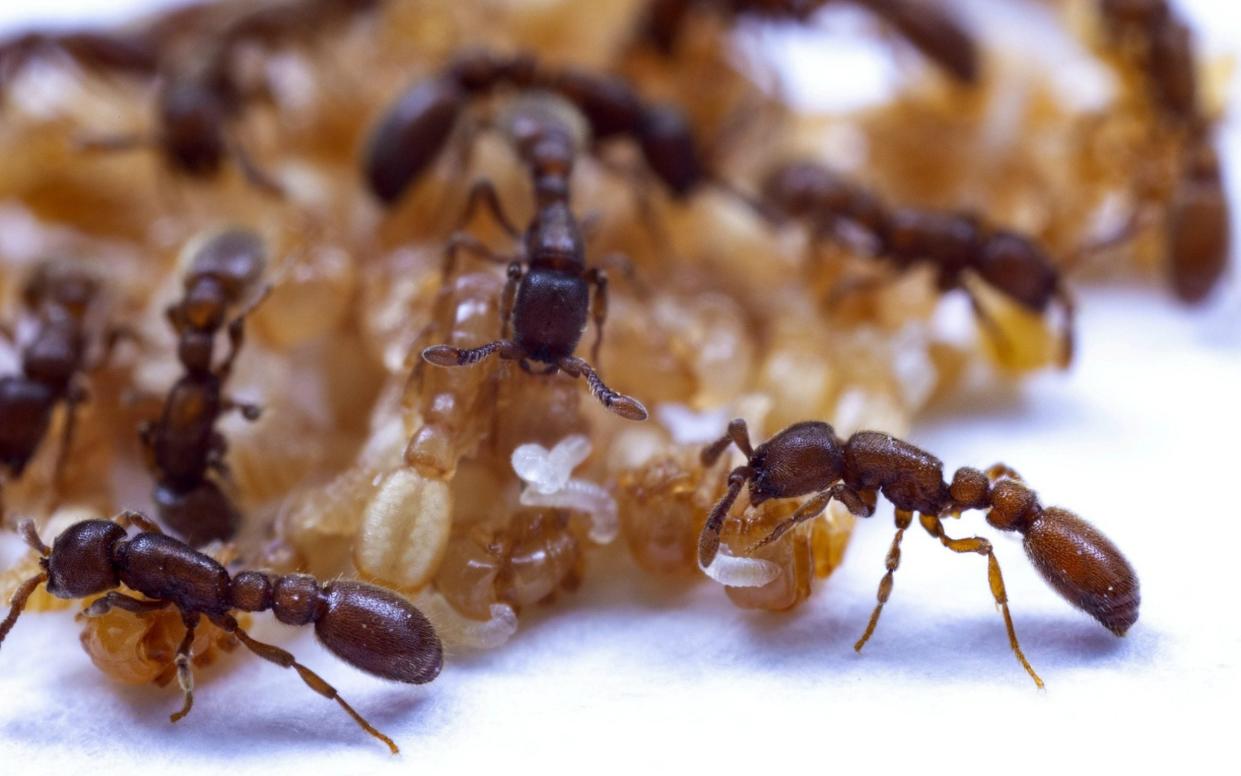Ants ‘breastfeed’ their young to boost survival across the colony

Ants secrete a milky fluid to feed their young in their own version of breastfeeding, new research has revealed.
The discovery has been likened to the parental care that mammals provide to their offspring after it was found that the fluid plays a vital role in colony survival.
The study also has important implications for our understanding of how insect societies evolved and are organised.
Researchers found that adult ants harvest the milky fluid from pupae just before hatching when they secrete large amounts of the nutrient-rich substance, similar to mammalian milk.
Ant eggs hatch to form larvae, which pupate before emerging as adults, however entomologists previously presumed that the pupae did not interact with the colony.
In fact, the fluid is either consumed by adult ants directly or by the developing larvae, which are given the nutrient-rich substance by the adults.
Larvae that cannot access the secretion exhibit stunted growth and poor survival, while pupae left to stagnate in their own secretions develop fungal infections and die.
Lead author Professor Daniel Kronauer, of The Rockefeller University in New York, said: “The first few days after hatching, larvae rely on the fluid almost like a newborn relies on milk.
“The adults also drink it voraciously and, although it’s not clear what it does to the adults, we’re confident that it impacts metabolism and physiology.
“It probably evolved once, early in ant evolution, or even preceding ant evolution.”
The fluid contains hormones and psychoactive substances, and so is thought to influence the behaviour and physiology of colony members.
Fluid consumption impacts health of entire colony
The health of the entire colony appears to hinge on the prompt consumption of this nutrient-packed fluid.
In lab experiments, first author Dr Orli Snir removed ants at different developmental stages from the colony to examine how social isolation affected the insects.
She noticed the fluid building up around the isolated pupae and only when she removed it manually did they survive into adulthood.
Dye tracing tests showed adults and larvae were drinking the milky substance and analysis found that it is derived from a conserved process called moulting, in which all insects shed their old cuticle to grow.
While non-social insects recycle the moulting fluid to conserve nutrients, ant pupae share it with their nestmates.
The fluid is rich in nutrients, psychoactive substances, hormones and some components found in the royal jelly that honeybees reserve for queen bee larvae.
While ants of all ages seem to enjoy the fluid, young ant larvae need it as those deprived of the fluid in their first four days of life fail to grow, and many eventually die.
Prof Kronauer said: “The way ants use this fluid creates a dependency between different developmental stages.
“It just shows to what extent ant colonies really operate as an integrated unit.”
The ant colony is sometimes referred to as a superorganism - one unified entity composed of many organisms working in concert.
Dr Snir said: “Pupal social fluid is the driving force behind a central and hitherto overlooked interaction network in ant societies.
“This reveals a new aspect of dependency between larvae and pupae, and pupae and adults.”
She added: “This study only provides a glimpse into the intricate interaction networks of insect societies.
“Our long-term goal is to gain a deep understanding of the neural and molecular mechanisms governing social organisation, and how these mechanisms evolved.”

